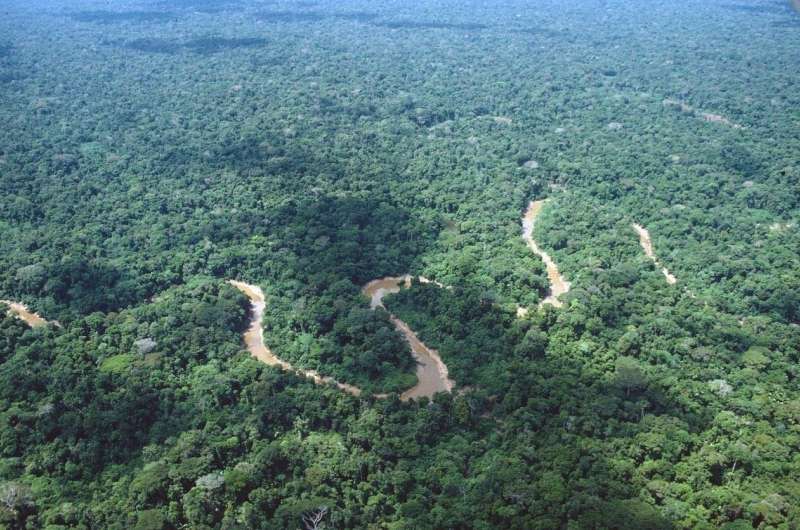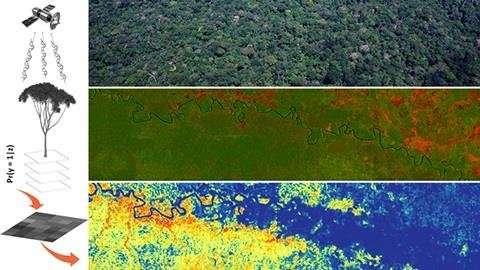Researchers model tree species distributions in Amazonia

Researchers from the Amazon Research Team of the University of Turku have succeeded in producing distribution maps for a selection of important tropical tree species in Peruvian lowland Amazonia. This was achieved by using machine learning methods that combine satellite imagery and field data. The study shows that it is possible to model tree species distributions at a spatial resolution that is fine enough to facilitate the practical management of forest resources.
Amazonia is the largest tropical forest in the world. It is a highly diverse and complex ecosystem that probably hosts more than 15,000 species of trees. A single hectare can contain more than 300 tree species, which is more than in all of Europe.
As the canopy species are difficult to reach and identify, species inventories are slow, laborious, and expensive. Therefore, field inventories rarely cover large enough areas to provide relevant information for conservation planning and forest resource management. The need for informed planning is urgent, because large areas are currently being deforested due to advancing agriculture, mining, road building, and other human activities.
The new study utilised freely available information from the Landsat and Aster satellites. Both register sunlight that is reflected from the ground surface or forest canopy in different wavelength bands.
The Landsat data is especially useful for identifying variation in vegetation, as tree species that have different canopy structures or leaf properties reflect light in different ways. The Aster data, in turn, provides information on elevation, which in lowland Amazonia is often indicative of soil moisture and drainage.

"Landsat provides a very good coverage of Amazonia both spatially and temporally. We have known for some time already that the Landsat images can be used to identify ecologically relevant environmental and biotic variation in Amazonian rainforests, but this is the first time we use satellite images to actually predict species distributions," says Professor Hanna Tuomisto, leader of the Amazon Research Team of the University of Turku.
Findings Provide Important Information for Forest Management and Conservation
The reliable interpretation of the patterns visible in satellite imagery requires ground truth data, i.e. data from the field. The researchers obtained such data from the forest concession Forestal Otorongo in southern Peru. According to the Peruvian Forestry and Wildlife Law, forest concessions have to carry out a forest inventory before initiating any logging activities. Forestal Otorongo gave their data to the researchers to analyse in order to increase the knowledge base for improving forest management practices in the Peruvian forestry sector.
"The amount of data that the forest censuses contain is enormous. It would be practically impossible to cover as large areas in such detail with normal botanical expeditions," says University Lecturer Kalle Ruokolainen, who also participated in the study.
Each tree recorded in the forest census can be plotted on the satellite images, which enables relating spectral values and tree species presences. Machine learning algorithms can then make predictions about the probability of the species presence in unvisited areas on the basis of how spectrally alike they are to the sites where the species has been found.
"Deforestation is rapidly advancing in southern Peruvian Amazonia. This study contributes to mapping the distribution of important tree species and identifying suitable areas for management and conservation purposes. The overarching goal is to provide simple and practical tools for decision-makers," says Pablo Pérez Chaves, Peruvian doctoral candidate at the University of Turku.
More information: Pablo Pérez Chaves et al. Using remote sensing to model tree species distribution in Peruvian lowland Amazonia, Biotropica (2018). DOI: 10.1111/btp.12597
Journal information: Biotropica
Provided by University of Turku


















